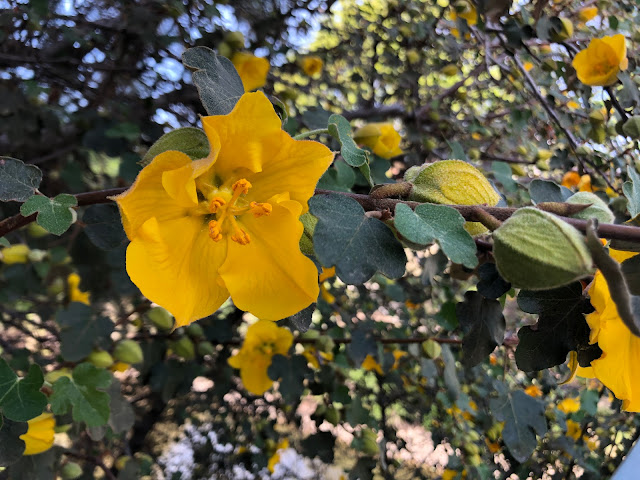
Calendar is filling up with informational events

|
|
California flannelbush is a spectacular native shrub. But how to prune it? The California Native Plant Society presents a webinar tonight on pruning natives.
(Photo: Kathy Morrison)
|
What do you want to learn? Which gardening situations do you want to understand better? There's so much information out there, but the trick is learning things that actually apply to our climate and our nearly year-round way of gardening. (Much of U.S. has gardens buried under snow right now.)
The region's garden calendars are suddenly packed with free opportunities to expand garden knowledge. Some are in person, others are online webinars. Here are a few coming up in the next couple weeks. Others we will flag as they get a little closer.
That CNPS webinars page has a list of other webinars scheduled monthly through May, with topics such as Aromatic Plants and Therapy Gardens. Links to recordings of past talks also are listed. A great resource.
Comments
0 comments have been posted.Sacramento Digs Gardening to your inbox.
Sites We Like
Garden Checklist for week of July 21
Your garden needs you!
* Keep your vegetable garden watered, mulched and weeded. Water before 8 a.m. to reduce the chance of fungal infection and to conserve moisture.
* Feed vegetable plants bone meal, rock phosphate or other fertilizers high in phosphate to stimulate more blooms and fruiting. (But wait until daily high temperatures drop out of the 100s.)
* Don’t let tomatoes wilt or dry out completely. Give tomatoes a deep watering two to three times a week.
* Harvest vegetables promptly to encourage plants to produce more. Squash especially tends to grow rapidly in hot weather. Keep an eye on zucchini.
* Pinch back chrysanthemums for bushy plants and more flowers in September.
* Remove spent flowers from roses, daylilies and other bloomers as they finish flowering.
* Pinch off blooms from basil so the plant will grow more leaves.
* Cut back lavender after flowering to promote a second bloom.
* It's not too late to add a splash of color. Plant petunias, snapdragons, zinnias and marigolds.
* From seed, plant corn, pumpkins, radishes, winter squash and sunflowers.